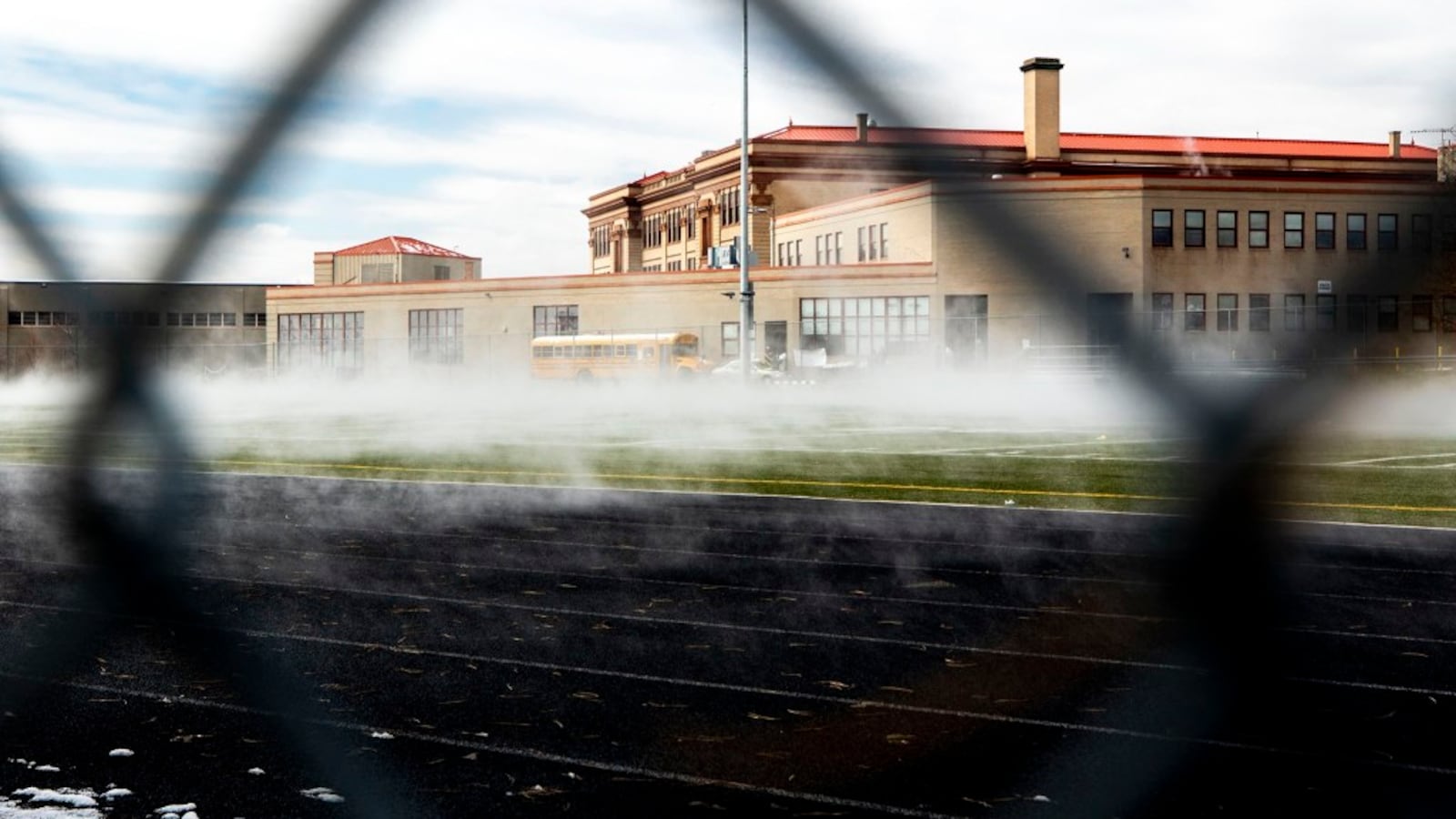“So, what were you like in high school?”
The question comes up at least twice a semester. Truthfully, I am a high school teacher who hated high school. I’d retreat during calculus class to the restroom windowsill to read novels. During lunch, I’d hide in the library to avoid monotonous lunch-table gossip and peruse the latest Time magazine. (President Obama had just been sworn in, and the iPhone now featured a built-in speaker.) During science classes, I’d drum my Ticonderoga pencils and watch the Amtrak train zip by the open window.
I longed to be on that train; to be taken from my high school and its suburban trappings to Boston or New York City. What I did not know then is that years later, I would follow that train line to the heart of North Philadelphia to be a high school English teacher. There, I would realize that the neat details of my own schooling were evidence of resources that weren’t shared equally across the state.

My sprawling, recently built high school campus in Central Pennsylvania was surrounded by mossy green athletic fields. Science labs were stockpiled with dead critters to dissect and the student weight room resembled an Equinox gym. Classes were never large and most students were academically on grade level. We had a brand new ventilation system that provided temperate conditions year-round. The only time it was defunct was when a few seniors let some chickens loose in the ductwork.
The high staff-to-student ratio was best demonstrated by the number of secretaries. There was the front-door attendance secretary, three office secretaries, the principal’s assistant, the athletic secretary, the vocational technology secretary, and the guidance secretary who gave the warmest hugs and could, from time to time, be manipulated to sign a hall pass so I wasn’t marked late to class. The hallways were replete with guidance counselors, psychologists, home economics teachers, and librarians.
A decade later and 70 miles down the track in North Philadelphia, there were no fertilized athletic fields. The school sat near the abandoned garment corridor, and until the school received a large grant for historic preservation, the environmental conditions within the school mirrored the conditions of textile workers of decades past.
Few classrooms had proper cooling, and students struggled to learn in the warming spring and fall. In the years prior, my classroom’s only source of cooling had been the brown, wood-paneled Kenmore mini-fridge that I kept for my chicken salad. Of course, this was not enough to prevent paramedic visits or student heat exhaustion. Now and then, while assisting student groups, I’d glance up as a stealthy sophomore snuck up to the fridge to stick his sweaty head in. Who could blame him? I did the same between periods.
There were unfelt dangers as well. In an expose in 2017, the Philadelphia Inquirer observed that many city classrooms were filled with toxins such as lead paint and asbestos. Until the historical preservation grant, my school was no exception. Students couldn’t drink the school’s water to cool down as it was found to be contaminated with lead. I had to stop washing my hands because the water burned my hands. According to the Inquirer’s report, there were over 30 cases of damaged asbestos throughout the building. I vividly recall running to the lavatory, squatting and holding my breath, knowing that a damaged pipe showered the toilet with asbestos particulates daily.
While suburban counterparts had copy rooms filled with sticky chart paper and Post It notes, we were allotted one ream of paper a month for all of our copies. (I’d pray that Jesus would multiply the sheets as he did the fish and the loaves.) Meanwhile, the school’s lone secretary was constantly juggling phone calls, legal filings, appointments, attendance, visitors, district documentation — everything. Every employee was a performer in this high-energy “School Soleil” balancing act. For years, there was no budgetary allotment for assistant principals, so everything from teacher instruction to school culture fell on the shoulders of one individual. In turn, teachers taught classes in multiple content areas, covered classes with vacancies, and filled in as testing coordinator, department head, and emergency counselor. This not to suggest that all suburban schools are shiny and new. But they are often overwhelmingly better resourced, whether dealing with students or building maintenance.
Every employee was a performer in this high-energy “School Soleil” balancing act.
I wish that students dealing with the visceral realities of community trauma and Philadelphia’s gun violence had a few more counselors on staff. I wish the students with carefully hidden headphones had a music class. I wish the parade of students that reminded me of my high school self, those who had a novel hidden in their backpack and appreciated the quality of a Ticonderoga pencil, had a library to escape to during a noisy lunch. We all deserved a restroom without falling asbestos.
A landmark case is underway now, with plaintiffs challenging the state’s school funding system. “Low-wealth Pennsylvania school districts have $4,800 less to spend per pupil on students than wealthy school districts — and this gap, one of the widest in the country, is growing,” activists are pointing out. So it’s a good time to grapple with the glaring juxtapositions of American schools.
Opponents of school finance reforms will argue that funding does not make a difference, pointing to examples of unwise district spending or districts that outspend the national average but do not have a higher achievement rate — ignoring the intense physical and economic needs of some districts’ buildings and students. But research and common sense suggest that investing in urban classrooms does make a difference.
Resources matter. Smaller classes matter. Counselors matter. Having a library matters. Copy machines matter. Copy paper for instructional materials matters. Living wages for educators matter. An asbestos-free classroom matters. Ventilation matters.
I can’t help but think of Amtrak’s Pennsylvanian route and the contrast of all the schools on its journey. How is it that two schools could be so different in the same state? How is it that one district has had a proper ventilation system for decades while another issues hundreds of school fans attached to plywood? A budget is nothing more than a statement of priorities. In 2021, how does your education still depend on what part of the track you live on?
Lydia Kulina-Washburn is a high school educator with seven years of experience teaching in Philadelphia schools. She holds a master’s in education with a focus in urban education from Temple University and is focused on exploring the connection between public schools and community place-making. When not grading essays, she can be seen walking her goldendoodle. Follow her here.



